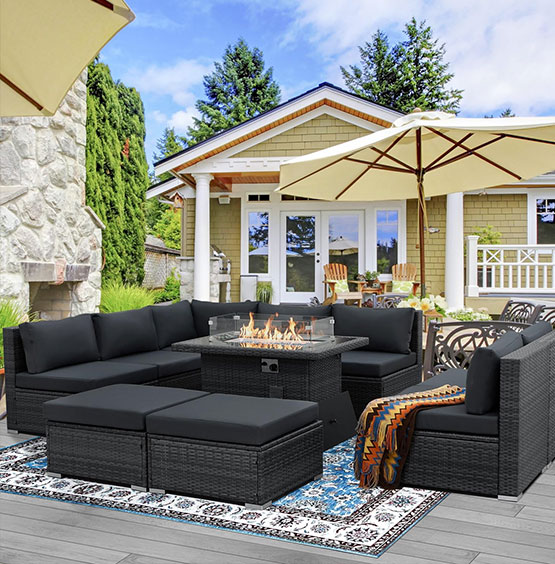How to arrange furniture for your backyard garden?
Transforming a backyard garden into a functional and inviting outdoor space requires more than just placing a few chairs on the lawn. It takes thoughtful planning, a sense of style, and an understanding of how you want to use the space. Whether you envision an elegant outdoor dining area, a cozy lounge for reading, or a lively entertainment spot for family and friends, arranging your garden furniture properly can make all the difference.
The first step in designing your backyard layout is to evaluate the size, shape, and features of the space. Take measurements of the garden and make note of permanent elements such as trees, pathways, sheds, or water features. Understanding how the sun moves across your yard throughout the day is also essential. Knowing which areas receive full sun, partial shade, or stay shaded most of the time will help you place seating and tables in comfortable spots.
Next, think about how you intend to use the space and define functional zones accordingly. A well-planned backyard typically includes multiple areas with distinct purposes. For example, you might have a dining area for meals and barbecues, a lounging space for relaxation, and a secluded corner for reading or meditation. Position your dining area close to the house or outdoor kitchen for ease of serving. Lounge areas should be placed where the environment encourages comfort—perhaps near a garden bed or under a pergola. If space allows, a fire pit or central table surrounded by chairs can serve as a conversation hub, especially during cooler evenings.
When selecting furniture, consider the scale and material. Avoid overcrowding small gardens with bulky pieces. Modular furniture, like sectional sofas or movable ottomans, offers flexibility and can be rearranged depending on your needs. Choose materials that are weather-resistant and easy to maintain. Teak wood, powder-coated aluminum, and synthetic rattan are excellent options for outdoor durability and style. Cushions and fabrics should be made with UV-resistant, quick-dry materials to withstand changing weather conditions.
A cohesive and structured layout often benefits from an anchor—something that visually grounds the furniture arrangement. An outdoor rug, a paved patio, or a wooden deck can help define the area and prevent furniture from sinking into the soil or grass. These elements not only add texture and style but also enhance the usability of the space.
Pay attention to the flow of movement through your garden. Arrange furniture to allow for easy walking paths between zones. Avoid blocking doorways, garden beds, or views. Furniture doesn’t always have to be set in straight lines; angling chairs or sofas slightly can create a more inviting and natural feel.
Incorporating shade is crucial for comfort, especially during the warmer months. Consider adding umbrellas, pergolas, or retractable awnings to protect seating areas from direct sun. Trees can also offer natural shade, while climbing plants on trellises can provide both privacy and a cooling effect. Add soft furnishings like pillows and throws for a cozy, lived-in feel that invites relaxation.
Plants and greenery should play a central role in your outdoor setup. Use planters, flower boxes, or vertical gardens to integrate the furniture with its surroundings. This not only enhances the aesthetic but also helps the space feel more connected to nature. Lighting is another important element that can transform the mood of your garden after dark. String lights, lanterns, solar path lights, or even integrated LED lighting in furniture can create a warm and magical evening atmosphere.
Storage is often overlooked in outdoor design but is essential for maintaining the condition of your furniture and accessories. Look for benches or coffee tables with built-in storage, or designate a nearby shed or cabinet for storing cushions, covers, and outdoor tools. This will help extend the life of your furniture and keep the garden looking tidy.
Ultimately, arranging furniture in your backyard garden is about creating a space that reflects your lifestyle while maximizing comfort, beauty, and usability. With a clear plan, the right furniture, and thoughtful design touches, your garden can become an extension of your home—a place where memories are made, and relaxation comes naturally.

